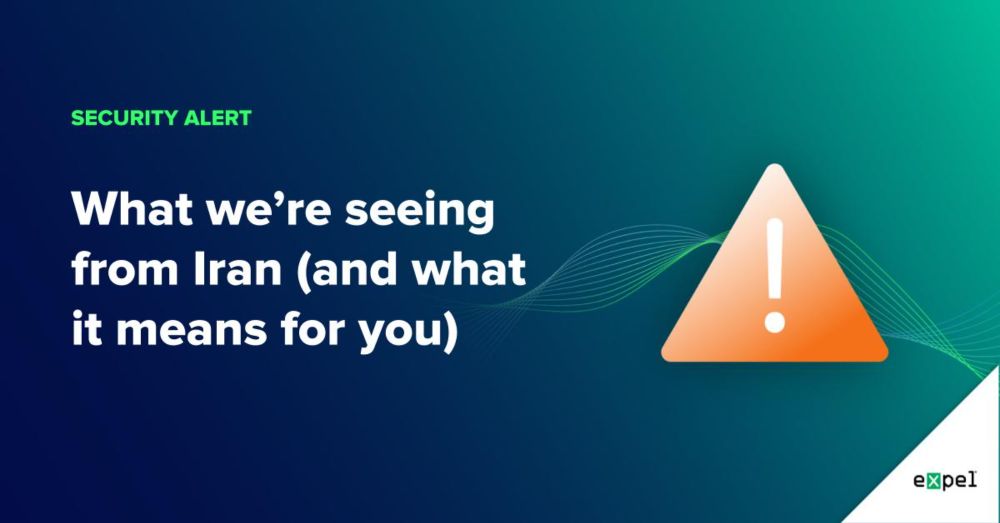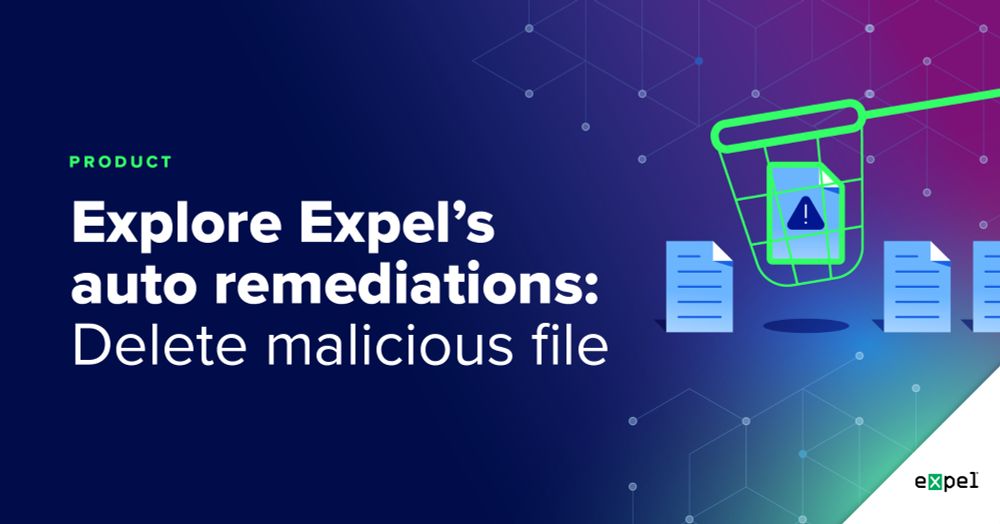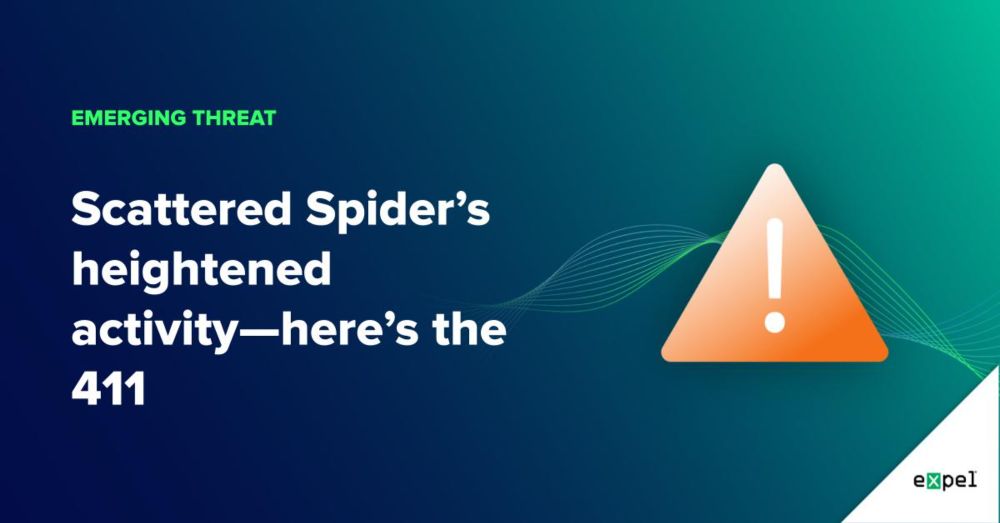
🔗 expel.com
BaoLoader hides backdoors in PDF editors and browsers. TamperedChef is a recipe app with hidden command codes. These apps function as promised, which is why users don't suspect anything.
BaoLoader hides backdoors in PDF editors and browsers. TamperedChef is a recipe app with hidden command codes. These apps function as promised, which is why users don't suspect anything.
Expel Intel is tracking this campaign. Here's what we've uncovered: www.theregister.com/2025/10/31/r...

Expel Intel is tracking this campaign. Here's what we've uncovered: www.theregister.com/2025/10/31/r...
Here’s what stood out: 73.9% of all incidents were identity-based attacks. Up from 67.6% last quarter.
Let’s dive into the Q3 numbers 🧵
Here’s what stood out: 73.9% of all incidents were identity-based attacks. Up from 67.6% last quarter.
Let’s dive into the Q3 numbers 🧵
Click the wrong sponsored result? You’ve just installed OysterLoader, their initial access malware.
Click the wrong sponsored result? You’ve just installed OysterLoader, their initial access malware.
Details: expel.com/blog/wsus-re...

Details: expel.com/blog/wsus-re...
Expel Intel’s Marcus Hutchins (@malwaretech.com) breaks down a campaign that weaponizes Greenshot, a legit screenshot tool, to evade detection at multiple layers. 🧵
Expel Intel’s Marcus Hutchins (@malwaretech.com) breaks down a campaign that weaponizes Greenshot, a legit screenshot tool, to evade detection at multiple layers. 🧵
175 new CVEs from Microsoft, 8 marked critical, 6 zero-days, 2 already exploited in the wild.
But not to fear, our threat intel team breaks down the 3 you should patch first. expel.com/blog/patch-t...

175 new CVEs from Microsoft, 8 marked critical, 6 zero-days, 2 already exploited in the wild.
But not to fear, our threat intel team breaks down the 3 you should patch first. expel.com/blog/patch-t...
Regardless, it's still able to install a malicious loader.
expel.com/blog/cache-s...

Regardless, it's still able to install a malicious loader.
expel.com/blog/cache-s...
Instead of downloading malware, they hide it in fake images that browsers automatically cache. Then PowerShell extracts and runs it—no web requests needed.

Instead of downloading malware, they hide it in fake images that browsers automatically cache. Then PowerShell extracts and runs it—no web requests needed.
Today, we’re taking the wraps off our expanded threat intel program: Expel Intel.
(1/7)
Today, we’re taking the wraps off our expanded threat intel program: Expel Intel.
(1/7)
That's what happens when you optimize for integration count, not detection quality. Vendors brag about "300+ integrations" while analysts burn out investigating false positives.
Start counting what matters: expel.com/blog/stop-co...

That's what happens when you optimize for integration count, not detection quality. Vendors brag about "300+ integrations" while analysts burn out investigating false positives.
Start counting what matters: expel.com/blog/stop-co...
Not quite so. Several employees already clicked the link and installed attacker-controlled tools.
Not quite so. Several employees already clicked the link and installed attacker-controlled tools.
Our threat hunters found them anyway. 🕵️
Our threat hunters found them anyway. 🕵️
Read our ongoing investigation here: expel.com/blog/you-don...

Read our ongoing investigation here: expel.com/blog/you-don...
We saw files with the code-signing signature “GLINT SOFTWARE SDN. BHD.” due to a JavaScript dropping “ManualFinder”
One of their signed files, a PDF editor, turns your device into a residential proxy—ew. 🧵👇

We saw files with the code-signing signature “GLINT SOFTWARE SDN. BHD.” due to a JavaScript dropping “ManualFinder”
One of their signed files, a PDF editor, turns your device into a residential proxy—ew. 🧵👇
Here’s what we’re seeing 🧵
Here’s what we’re seeing 🧵
📖 Read more: www.helpnetsecurity.com/2025/07/17/c...
#cybersecurity #cybersecuritynews #burnout #certification @expelsecurity.bsky.social

📖 Read more: www.helpnetsecurity.com/2025/07/17/c...
#cybersecurity #cybersecuritynews #burnout #certification @expelsecurity.bsky.social
Took cloud security so seriously we actually ended up in the clouds. ☁️ Thanks for having us, Nasdaq!




Took cloud security so seriously we actually ended up in the clouds. ☁️ Thanks for having us, Nasdaq!
Our take: things are not likely to intensify in the cyber realm.
Here's what to do and what Expel is doing:

Our take: things are not likely to intensify in the cyber realm.
Here's what to do and what Expel is doing:
Expel's “delete malicious file” response action enables our SOC to permanently remove a confirmed malicious file directly from an affected host, using the EDRs and security tools you already have. expel.com/blog/explore...

Expel's “delete malicious file” response action enables our SOC to permanently remove a confirmed malicious file directly from an affected host, using the EDRs and security tools you already have. expel.com/blog/explore...
Get the full 411 on Scattered Spider's heightened activity:

Get the full 411 on Scattered Spider's heightened activity:
Of the vulnerabilities, here are the three that caught our eye as the highest priority due to the vulnerability exploitation risk factors 👀🚨 expel.com/blog/patch-t...

Of the vulnerabilities, here are the three that caught our eye as the highest priority due to the vulnerability exploitation risk factors 👀🚨 expel.com/blog/patch-t...
We’re doubling down on our position as a leader in MDR flexibility by announcing the expansion of our SIEM coverage. We’ve launched advanced support for Palo Alto Networks Cortex XSIAM this month. 👏
We’re doubling down on our position as a leader in MDR flexibility by announcing the expansion of our SIEM coverage. We’ve launched advanced support for Palo Alto Networks Cortex XSIAM this month. 👏
Our CSO Greg Notch lays out the 5 questions you need to ask when your security vendor gets acquired: expel.com/blog/5-quest...

Our CSO Greg Notch lays out the 5 questions you need to ask when your security vendor gets acquired: expel.com/blog/5-quest...
🏃 run a darn good mile
🤳 doom scroll before your next meeting
🖥️ or onboard Expel
That's right. The onboarding even includes time to validate the connection within Expel Workbench™ and to test the connection. Watch the full demo and follow along! expel.com/blog/how-to-...

🏃 run a darn good mile
🤳 doom scroll before your next meeting
🖥️ or onboard Expel
That's right. The onboarding even includes time to validate the connection within Expel Workbench™ and to test the connection. Watch the full demo and follow along! expel.com/blog/how-to-...

